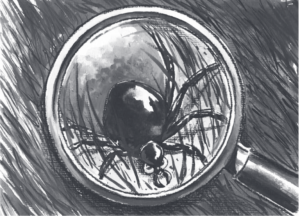While spending a summer on Fire Island, it’s pretty difficult to be blissfully unaware of the risk of Lyme disease. In 2015, according to the Center for Disease Control (CDC), there were 256 reported cases of Lyme disease in Suffolk County and 44 in Nassau County. This year, as the CDC predicts a large increase in tick population this summer, the concern of Senator Charles Schumer (D-NY) is also focused on a less widely-known disease, the Human Powassan virus (POW).
The differences between Powassan disease and Lyme disease are significant. While Lyme is classified by the CDC as a system, tick-borne bacterial disease, POW is classified as an arbovirus and neuroinvasive disease. Lyme disease also occurs with greater frequency than POW. In 2016, there were only six reported cases of POW in the United States and from 2006 to 2016 there have only been 16 reported cases in the state of New York.

The CDC attests that the region in which Lyme disease cases are prominent and disease-carrying ticks are found has grown geographically over the last 20 years, expanding to cover a larger percentage of the Northeast. This means that although cases of POW have been relatively limited in the past, there potentially could be an increase in ticks that carry POW this summer and an increase in infections.
POW generally takes between a week and a month to incubate and it’s possible for those infected to be asymptomatic. The virus has the potential to impact the central nervous system and cause fever, vomiting, weakness, and speech difficulties, among other symptoms. These effects are distinct from the telltale signs of Lyme disease. Within the first 30 days of infection, those with Lyme disease may notice fever, joint aches, swollen lymph nodes, and an erythema migrans rash, among other symptoms. While Lyme disease can be treated with antibiotics, there are currently no treatments for POW.
To avoid contracting either POW or Lyme disease the CDC recommends the following: avoiding wooded areas with tall grass, using bug repellent that contains 20 percent or more DEET, and conducting tick checks for people and pets who have recently been in areas where ticks are found.
In a press release Senator Schumer said, “In times like these, it is imperative we do all that we can to halt the continued spread of these tick-borne diseases. That’s why I’m urging HHS Secretary Tom Price to fully implement the already-passed legislation within the 21st Century Cures Act.” The Act was signed into law on Dec. 13, 2016, and contains provisions that fund the National Institutes of Health. This could allow the institute to conduct research geared towards disease prevention and eradication. For example, the Lyme disease vaccine was discontinued in 2002 and no new vaccine has been introduced since. The bill specifically requires HHS support of research concerning tick population control, tick-borne diseases, epidemiological research, and surveillance. If this summer shows the large increase in tick population predicted by the CDC, then Senator Schumer’s push for more research into tick-borne diseases will have come at an opportune time.






























